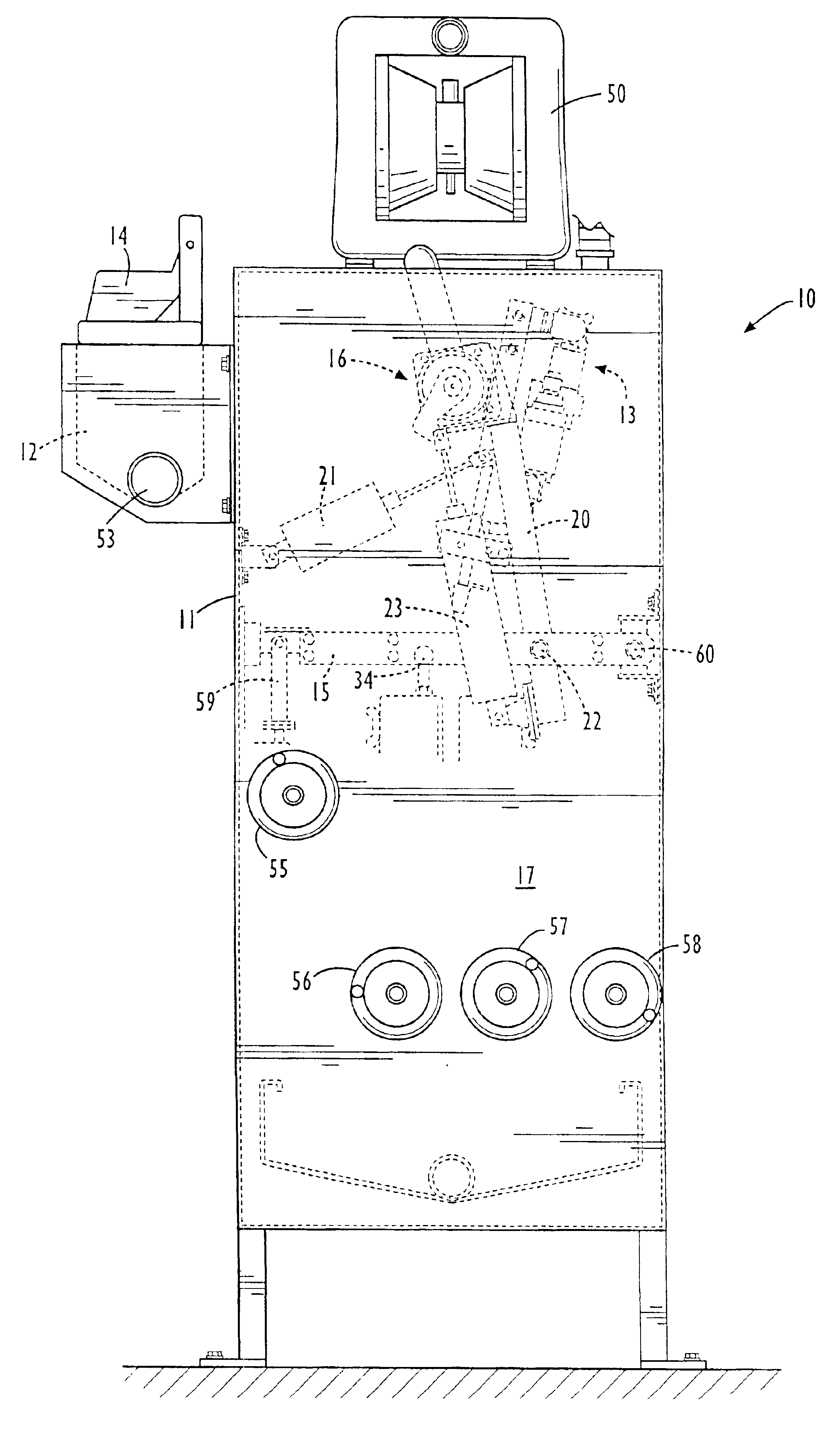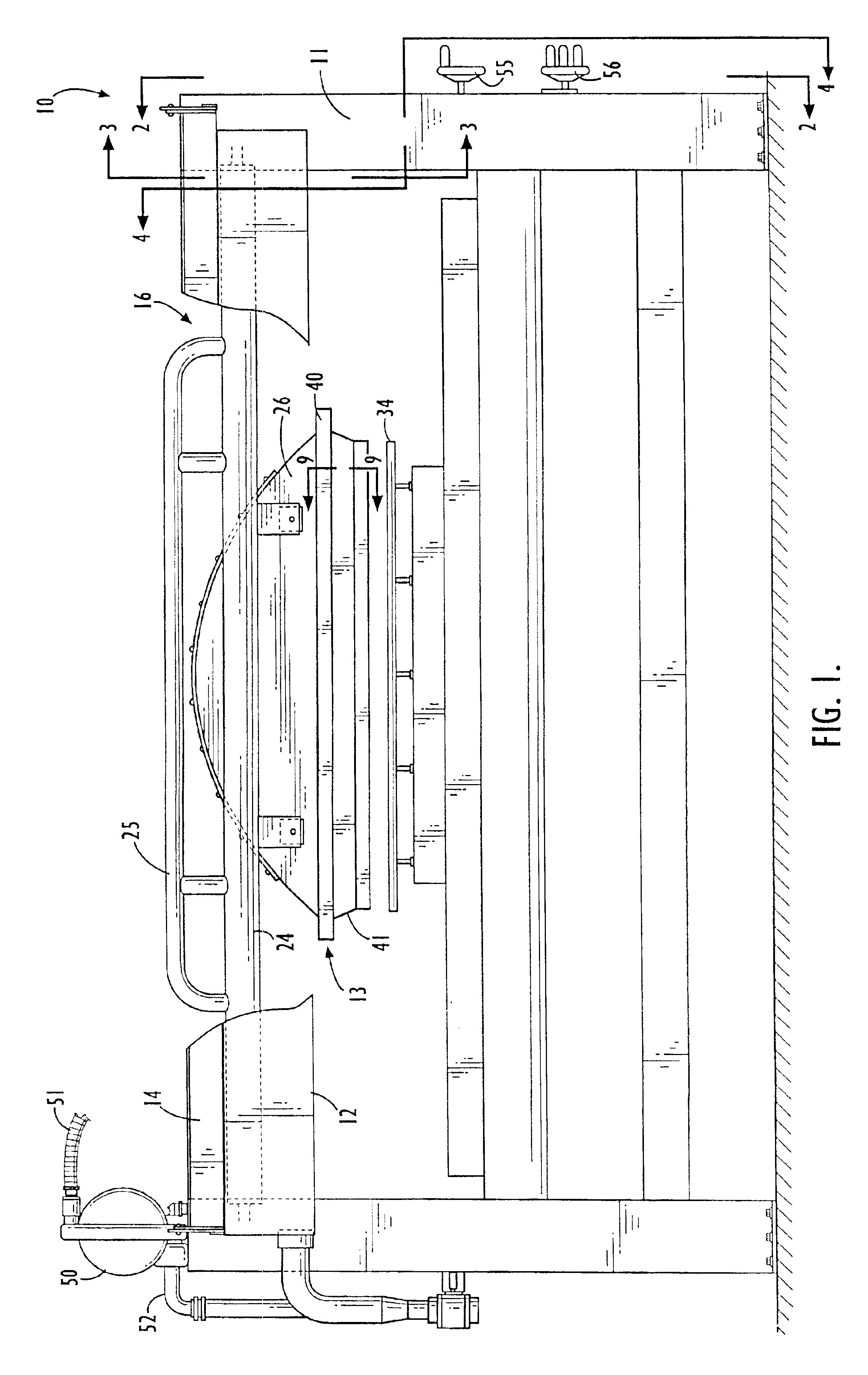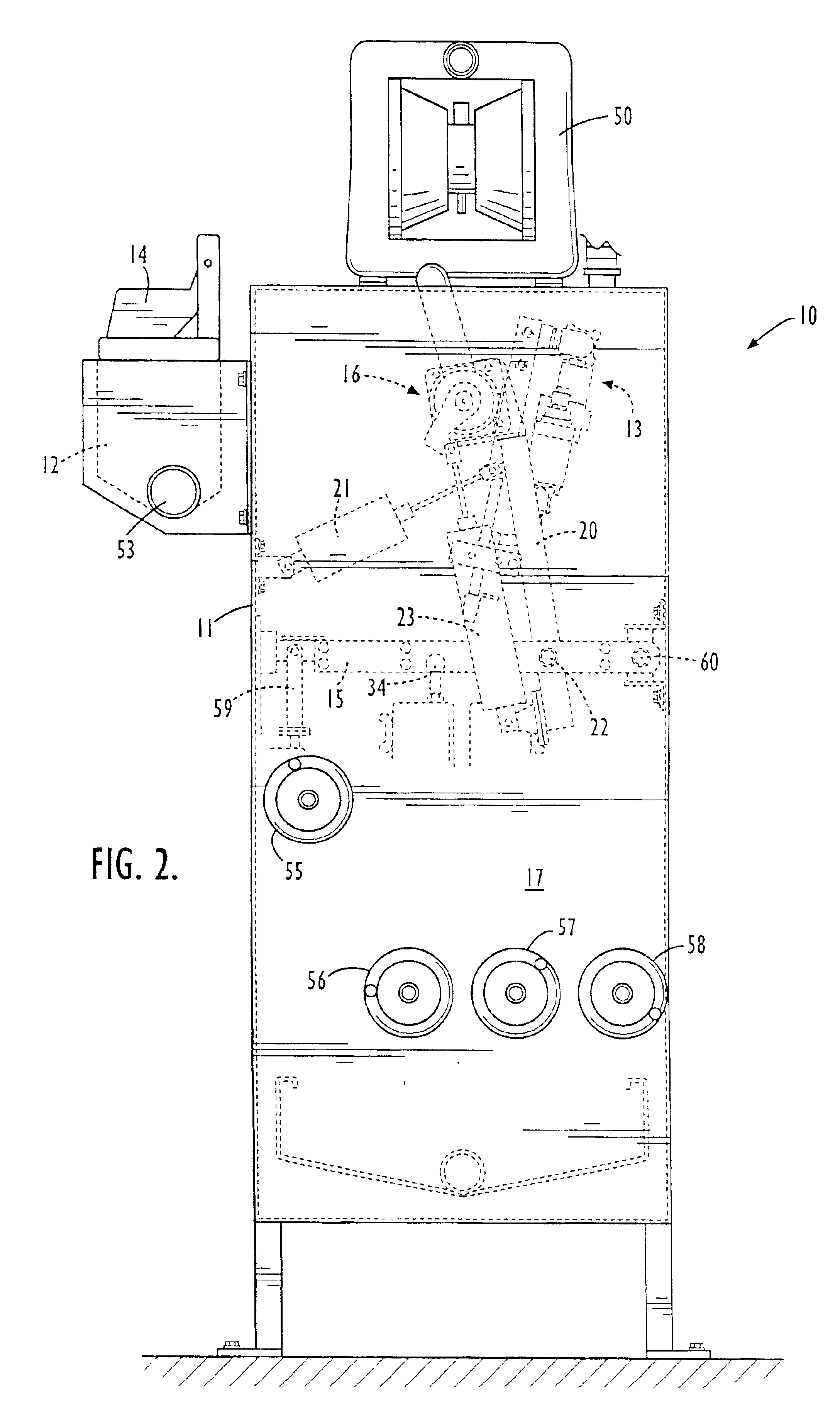Apparatus for applying foamed coating material to a traveling textile substrate
a technology for textile substrates and apparatuses, applied in the field of apparatus for applying foamed coatings to traveling textile substrates, can solve the problems of environmental pollution, insufficient structural integrity of textile substrates, and the need to efficiently apply coating materials, and achieve the effect of easy movement and complete cleaning
- Summary
- Abstract
- Description
- Claims
- Application Information
AI Technical Summary
Benefits of technology
Problems solved by technology
Method used
Image
Examples
Embodiment Construction
The present invention will now be described fully hereinafter with reference to the accompanying drawings, in which preferred embodiments of the invention are shown. This invention may, however, be embodied in many different forms and should not be construed as limited to the embodiments set forth herein. Rather, these embodiments are provided so that this disclosure will be thorough and complete, and will fully convey the scope of the invention to those skilled in the art. It will be understood that all alternatives, modifications, and equivalents are intended be included within the spirit and scope of the invention as defined by the appended claims.
Turning now to FIG. 1, there is shown a coater 10 for applying foamed material to a traveling textile substrate. The coater 10 comprises a frame 11, a flush pan 12 (which is partially cut away in FIG. 1), an applicator 13, and a positioning mechanism 16 moveably mounting the applicator 13 onto the frame 11. The positioning mechanism 16 ...
PUM
| Property | Measurement | Unit |
|---|---|---|
| Flow rate | aaaaa | aaaaa |
| Viscosity | aaaaa | aaaaa |
Abstract
Description
Claims
Application Information
 Login to View More
Login to View More - R&D
- Intellectual Property
- Life Sciences
- Materials
- Tech Scout
- Unparalleled Data Quality
- Higher Quality Content
- 60% Fewer Hallucinations
Browse by: Latest US Patents, China's latest patents, Technical Efficacy Thesaurus, Application Domain, Technology Topic, Popular Technical Reports.
© 2025 PatSnap. All rights reserved.Legal|Privacy policy|Modern Slavery Act Transparency Statement|Sitemap|About US| Contact US: help@patsnap.com



